
When the Tangeman family (gardener Anne, her husband John and their two sons, then ages one and three) moved from Massachusetts to the Seattle area in 2002, it was a bit of a return home. Anne had spent her childhood here, and family members lived nearby. She and John looked for a property that would afford space for their boys to play outside and for a garden. They were drawn to one property on a cul-de-sac; its tall hedges and large trees gave structure, but otherwise it sat as a blank slate.
Soon after moving in, the Tangemans began to suspect that their home had previously harbored some serious gardeners. The recent owners hadn’t been growing anything special—overgrown shrubs and a mangy lawn dominated the scene. But some mature woodies like mahonia, witch hazel and kousa dogwood suggested a longer-ago presence of someone with an interest in less-than-common plants. Plus, nursery and seed catalogs began arriving in the mail unbidden, addressed to a Charles Price.
Anne dug into some research online and at the local library and soon discovered that the Tangeman home was once gardened by Price and Glenn Withey, professional landscape designers who also served for 20 years as the curators of Dunn Gardens, an historic property in Seattle. Anne found that the garden they’d created at her new property was even featured in Horticulture (August/September 1992).
When Withey and Price left their garden, they took most plants with them. However, besides the trees and hedges that Anne first noticed, some choice plants remained in the form of seed. She has found that surprises tend to pop up from bare soil or when she removes a larger plant. For example, after she cut down an old, declining rose, a Moroccan broom (Argyrocytisus battandieri) sprang up from its base.
Esta historia es de la edición May - June 2023 de Horticulture.
Comience su prueba gratuita de Magzter GOLD de 7 días para acceder a miles de historias premium seleccionadas y a más de 9,000 revistas y periódicos.
Ya eres suscriptor ? Conectar
Esta historia es de la edición May - June 2023 de Horticulture.
Comience su prueba gratuita de Magzter GOLD de 7 días para acceder a miles de historias premium seleccionadas y a más de 9,000 revistas y periódicos.
Ya eres suscriptor? Conectar

Pot It Up
Shake up the containergarden with theseNorth America –native perennials

THE GARDEN PATH TO PERDITION
I WAS CRUISING RIGHT ALONG, feeling okay about myself, when I came across a list of the Seven Deadly Sins.
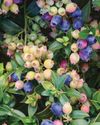
A Productive PATIO
Tiny fruit, vegetable and herb plants help gardeners maximize any sort of growing space
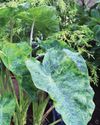
TROPICAL FUSION
A FUSS-FREE APPROACH TO USING BOLD TROPICAL PLANTS IN ANY TEMPERATE GARDEN

WINTER READING
Pass the time with any of these inspiring books
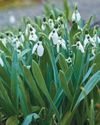
SENSING A PATTERN
Greg Coppa reflects on an odd weather year and what continued warming may mean for his Rhode Island garden
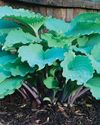
TOP-PRIZE PERENNIALS
A foliage masterpiece for shade and a late bloomer for sun

MARK WESSEL
What's new for fruit and vegetable gardeners?
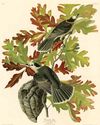
KINGS OF THE NORTHERN FORESTS
A look at the trees, shrubs and perennial plants that bolster life in Ecoregion 5

PROJECT FEEDERWATCH
Gardeners can help scientists know just where the birds are in winter